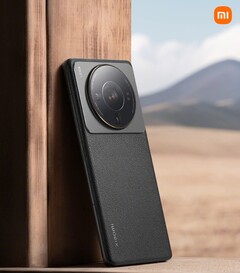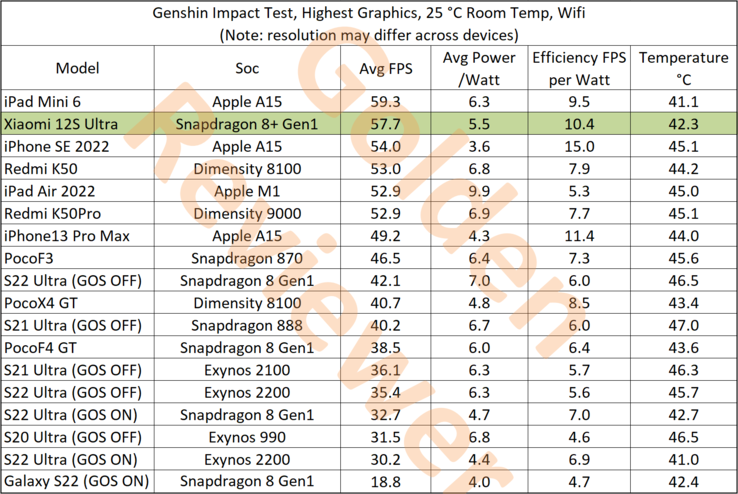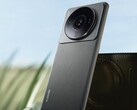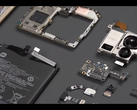Xiaomi launched the Xiaomi 12S series over a week ago as the first devices to feature Qualcomm's new Snapdragon 8+ Gen 1. After the failures of the Samsung-built Snapdragon 8 Gen 1, Qualcomm moved over to TSMC for the Snapdragon 8+ Gen 1 and that decision appears to have paid off, with the flagship chipset performing rather well in a new gaming test.
As tested by Golden Reviewer, the Snapdragon 8+ Gen 1 appears to right all the wrongs of the Snapdragon 8 Gen 1 as it puts up a stellar performance in the tester's Genshin Impact test. The flagship chipset significantly outperforms the Snapdragon 8 Gen 1, and edges Apple's A15 Bionic on the iPhone 13 Pro Max as well.
For one, the Xiaomi 12S Ultra and its Snapdragon 8+ Gen 1 records an average framerate of 57.7 FPS, a figure only bested by the iPad Mini 6 at 59.3 FPS. Comparatively, the iPhone 13 Pro Max averages 49.2 FPS, with the Snapdragon 8 Gen 1 on the Galaxy S22 Ultra only managing a paltry 42.1 FPS.
The Snapdragon 8+ Gen 1 offers stellar efficiency as well—a tad worse than the A15 on the iPhone 13 Pro Max and iPhone SE 2022 but better than every other tested chipset. The Dimensity 8100 on the Redmi K50, for example, has been hailed for its efficiency, but the Snapdragon 8+ Gen 1 holds a solid 30% advantage in that department. Versus the Snapdragon 8 Gen 1, that number rises to a whopping 70%.
The verdict is simple: Unlike the Snapdragon 8 Gen 1, the Snapdragon 8+ Gen 1 appears to live up to expectations as the best chipset that has ever been implemented on an Android device. On Genshin Impact, at least. While optimization is always a factor, the Qualcomm SoC competes with the A15 Bionic on the iPhone 13 Pro Max and even comes out ahead at times.
























